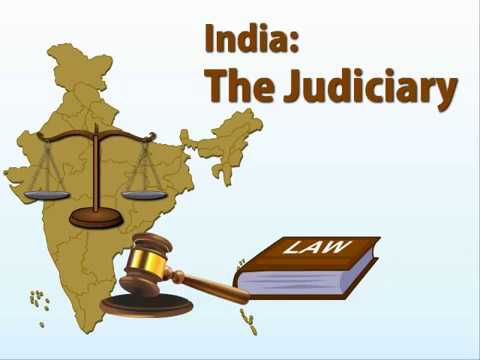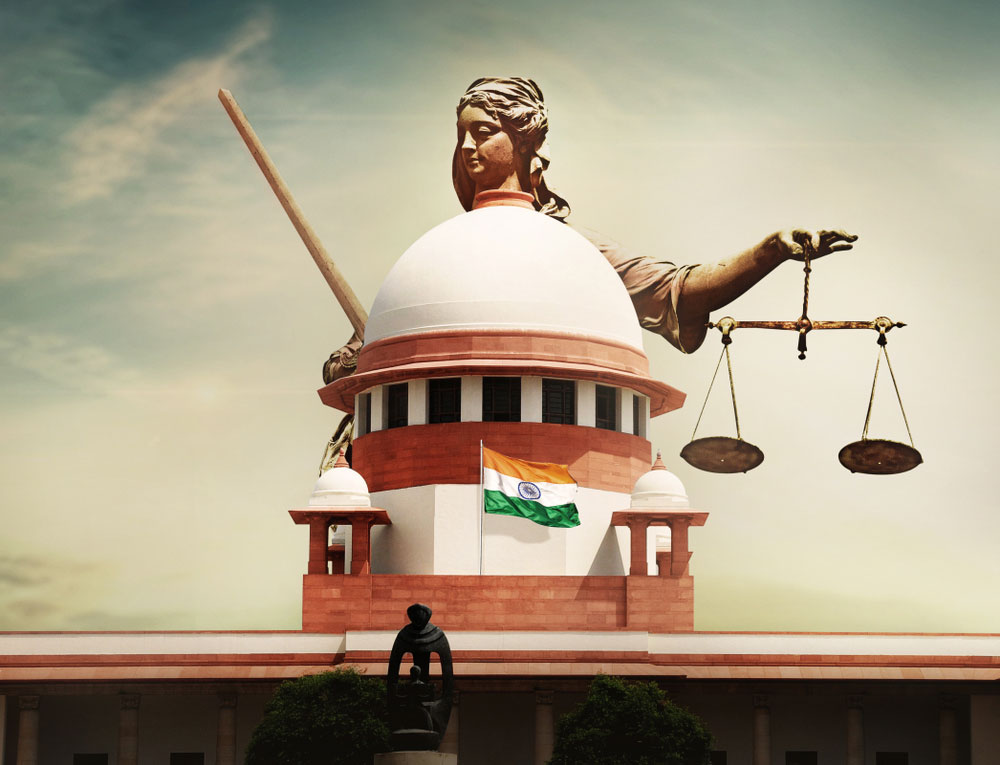Indian Judicial System at a glance
This article explores the structure of the Indian judicial system and acknowledges its composition and hierarchy along with its function.
The Indian Judicial System or the Judiciary is a constitutional body which interprets and enforces the rule of law. The Indian Judiciary must therefore implement a common law wherein the Indian Judiciary must administer a system of common law in which import laws, corporate bonds and regulation shall all enact to the law of the country.
The Indian Judiciary system has adopted the heritage of the legal system created by the colonial powers and the princely states in the mid 19th century. Our Judicial System has also tried to maintain the attributes of ancient and medieval practices.

Picture credit- ipleaders.in
The judicial system is responsible for the administration of the law, resolving debates and directing equality to all citizens. The Judiciary of India is the watchdog of the rules and regulations in the constitution. It further acts as the Guardian of the Constitution. To allow the rule of law to function effectively, it is essential to have an unbiased judiciary.
The most important factor of the Indian Judicial System is “The Independent of the Judiciary”. It simply means that no one from the government or outside can interfere with the working of the judges. The decision of the judge will be considered to be final. It also means that judges can fulfil their responsibilities without any fear or hesitation, as the autonomous power of taking decisions lies with them.
The Structure of The Indian Judiciary System.
India has a single unified legislative structure. In India, the judicial system has a pyramid framework with the Supreme Court is the apex court and is at the top. The High Courts are under the Supreme Court. While the District Courts are under the High Court. Another type of court is the Executive & Revenue court which is controlled by the state government.
The Supreme Court of India is the apex court and has its decision binding on all the other courts. It has the power to transfer the judges of the High Court. The Supreme Court can transfer cases from any court to itself. It can also transfer cases from the High Court to another. It has Original, Appellate and Advisory jurisdiction.
The High Court can hear an appeal from lower coats. It can issue writs for restoring fundamental rights. The High Court can deal with cases which are within its jurisdiction. There are 25 High Courts in the country. It has control over both Original, Appellate jurisdiction. It controls all the lower courts and looks after them.
The District Court deals with cases in the district. It considers appeals on verdict given by the lower courts. Gives its judgement on cases involving serious criminal offences, equity, domestic relations, and civil.
Read more: 93 years since Simon Commission took its first step towards India

Image source- telegraphindia
FUNCTIONS OF INDIAN JUDICIAL System.
-
To impart ‘Justice’ to the citizens of India. The first and foremost important function of the Supreme Court is to provide justice to the people. It punishes those who are found guilty after facing the trial for violating the rule of the law. The judiciary shall determine the volume of the penalty to be imposed on the criminals.
-
To interpret and apply the rule of law. The interpretation and application of laws for particular cases are one of the key roles of the judiciary. The judges interpret and enforce laws while giving its judgement on the cases.
-
Helps in making laws. The judicial sector also plays an important role in making laws. The decisions of the courts ultimately decide the importance, existence and nature of laws enacted by the legislature.
-
Protection of Fundamental Rights. The Supreme court is ultimately responsible for enforcing the fundamental rights of the people. If the rights of the citizens are breached or threatened through a violation by the government or by private organisations. Then our citizens have a right to pursue the protection of the judiciary. The Supreme Court issue Writs for the implementation of fundamental rights.
-
Acts as guardian of the Constitution. The constitution is the highest law of the country, the interpretation and security of which is the obligation of the judiciary. For this reason, judicial review of any legislation may be conducted by the judiciary to decide if it complies with the spirit of the constitution. In case if any of the laws are found to be unconstitutional, it will be dismissed by the judiciary and will be declared unconstitutional in future.
-
Supervisory function. The superior courts also have the power to control the lower courts in India.
-
Advisory function. The Supreme Court of India plays the role of advisory functions. It can offer its insights about any particular issues or on any legal matters. This is done without any questions only if the chief desires.
-
Key role in a federation. Moreover, the legal executive plays out a big dispute resolution between the internal government and the states. It also acts as a judge in disputes between states.
-
To conduct judicial enquiries. Judges are very often invited to lead enquiry committees which are set up to investigate a few serious incidents caused by mistakes or inaccuracies of the suspected government or other public officials.
The Civil Courts and The Criminal Courts of the Indian Judicial System.
Civil Court
Common causes are resolved by the Civil Courts. In civil courts, the common law is referred to most of the cases apart from the other than the criminal cases. Civil law is applied when one person sues another person or in matters of debates. Popular instances include divorce, expulsion, problems relating to customers, debts or insolvency, etc. Civil courts have the power to prosecute any civil case unless it is explicitly or indirectly prohibited by other laws in force.
The Code of Civil Procedure (CPC) 1908 regulates the procedures for administering civil cases in India through all the civil courts.
Civil Courts have 4 types of Jurisdiction.
-
Subject Matter- It can try incidents of a specific kind and associate with a particular subject.
-
Territorial- It can legally present cases within its geographical region, not beyond the area.
-
Pecuniary- Cases associated with cash and money-related suits.
-
Appellate- This is the court’s jurisdiction to hear progress or to review a case that a lower court has already decided.
Criminal Court
Criminal rules apply to crimes such as assaults, theft, homicide, incense, rape and other crimes. After an individual is arrested and convicted of a crime, he goes to a criminal court.
The Government places a lawsuit in the criminal court against an individual for a crime. The defendant is the person accused of the crime. The state must show that the defendant is guilty “without reasonable doubt.” If the accused was found guilty, he or she could go to trial or jail.
The jurisdiction of different criminal courts is specified in the Criminal Code (CrPC). Criminal courts have exclusive jurisdiction over their cases.
Any crime referred to in the Indian Penal Code can be prosecuted under Section 26 of the CrPC in High Court, Session Court, Any other Court as defined in the First Schedule Code of Criminal Procedure.
Check our Instagram : Ownguru
Facebook : Ownguru
If you have an interesting write-up or any suggestion, write to us at ownguru@gmail.com
